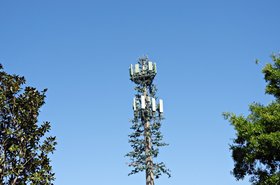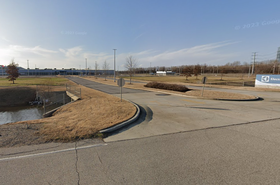Electricity demand in the US is projected to surge by 128GW within the next five years, marking a fivefold increase in load growth projections compared to estimates from two years ago, according to a new report from Grid Strategies.
The report identifies data center expansion as the primary driver of this demand, with the PJM Interconnection and Electric Reliability Council of Texas (ERCOT) regions expected to see the largest increases. These regions are expected to add 73GW of new demand by 2029.
However, the report notes that projections vary. Tech industry analysts predict data center growth of up to 65GW, while updated utility estimates suggest it could surpass 90GW.
In ERCOT, forecasts indicate 125GW of new load by 2029, 82GW of which is attributed to data centers. Meanwhile, the PJM region has revised its forecasts from 153.3GW to 165.7GW over the past two years, reflecting 8.1 percent growth.
PJM utilities recently increased their estimates for large-scale load additions by 2029, from 15GW to 30GW, with most growth concentrated in Northern Virginia. Pennsylvania, Ohio, and Indiana are also expected to experience notable spikes in demand.
The report pinpoints Dallas (ERCOT), Northern Virginia and Pennsylvania (PJM), and Atlanta (Georgia) as the areas that will experience the largest growth in new load.
In Georgia, the state utility Georgia Power anticipates 25.8GW of new large loads by 2029, with more than 85 percent of this tied to data centers, with the rest coming from manufacturing facilities.
Additional growth is expected in the Pacific Northwest, the Midcontinent Independent System Operator territory, and the Southwest Power Pool.
In its Q3 report, Portland General Electric, which covers most of Oregon and the Pacific Northwest, reported a nine percent rise in industrial demand, much of it within the semiconductor manufacturing and data center sectors.
AI data centers are projected to be the major contributor, potentially accounting for 40 percent of total data center power demand by 2030. However, the report warns of potential risks associated with this rapid expansion, contending it may represent a “bubble.”
As a result, Grid Strategies cautions that the aggressive pace of data center development could deplete grid capacity within the next decade, while the revenue needed to support AI-related investments remains uncertain.
The report advocates for large-scale investments in transmission infrastructure to address the growing demand, arguing that this is the most cost-effective solution.
The US Department of Energy has announced sweeping investments in transmission infrastructure over 2024 to meet growth in demand. For example, in October, it reported an investment of $1.5 billion in four transmission projects across Louisiana, Maine, Mississippi, New Mexico, Oklahoma, and Texas.
However, the lengthy timelines and regulatory hurdles associated with building high-capacity, interregional transmission lines pose significant challenges to meeting future needs.
Much of this isn't news to the sector, with several major utilities warning of significant load growth in their latest annual reports and integrated resource plans (IRP).
In its latest IRP, Dominion Energy, which serves the North Virginian market, projected a more than 100 percent increase in electricity usage in the next 15 years, driven primarily by forecasted data center load growth across the state.
To meet this rising demand, the IRP has set out an “all-of-the-above" approach, which includes increasing power generation from every source, extensive grid upgrades, and energy efficiency programs to maintain grid reliability while meeting unprecedented growth in power demand.
Grid Strategies is a power sector consulting firm specializing in bulk transmission policy, power markets, and clean energy integration. Its president, Rob Gramlich, previously oversaw transmission and power market policy for the American Wind Energy Association as senior vice president and interim CEO, served as an economic advisor to FERC chairman Pat Wood III, and was a senior economist at PJM Interconnection.







